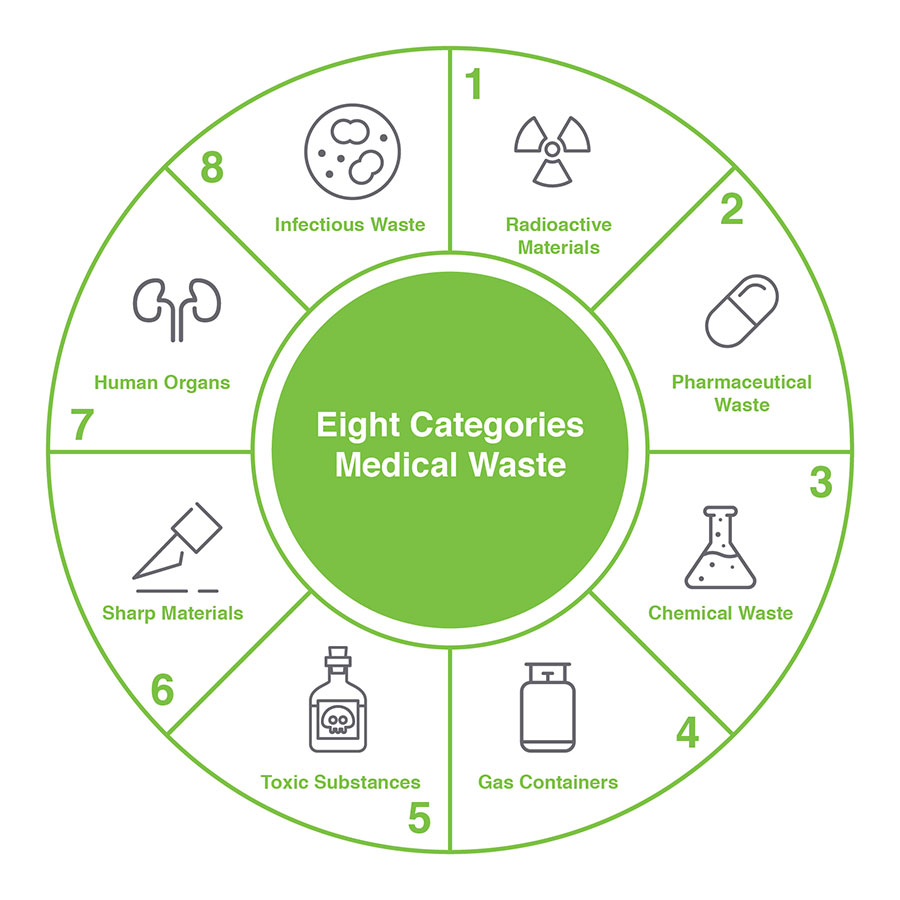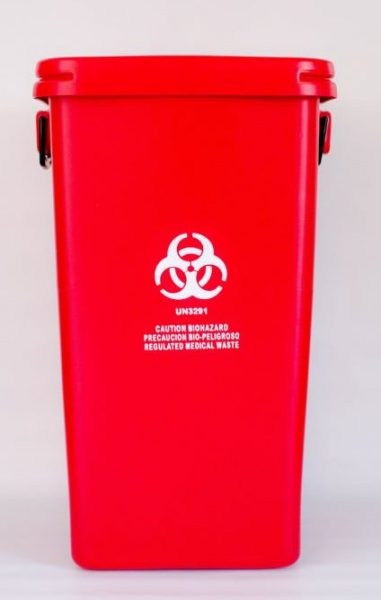Defending Well-Being: Unveiling the Significance of Specialist Medical Waste Removal
Defending Well-Being: Unveiling the Significance of Specialist Medical Waste Removal
Blog Article
Stay Ahead of Laws: Specialist Suggestions on Medical Waste Disposal
In a world where the health care sector is constantly progressing, it is vital for clinical facilities to remain ahead of policies when it pertains to the correct disposal of medical waste. With strict standards and frequent governing changes, it can be challenging to browse the intricacies of this procedure. However, with skilled suggestions, facilities can make certain compliance and reduce threats connected with inappropriate garbage disposal. From comprehending the different groups of clinical waste to implementing the appropriate collection and segregation techniques, this conversation will certainly provide important insights and actionable ideas to aid centers remain ahead of policies in the ever-changing landscape of medical garbage disposal.
Understanding Clinical Waste Categories
Understanding clinical waste categories is crucial for appropriate disposal and monitoring in health care centers. Medical waste describes any type of waste created by healthcare tasks that might position a threat to public wellness or the environment. It is important to classify medical waste precisely to guarantee its secure handling, transport, therapy, and disposal.
There are numerous groups of medical waste that health care centers need to be familiar with. One of the most common classifications include infectious waste, pathological waste, sharps waste, pharmaceutical waste, and chemical waste. Each classification has specific guidelines and laws for its appropriate management and disposal.
Pathological waste refers to human tissues, organs, or body parts that require unique handling and disposal. Drug waste makes up ended, unused, or contaminated drugs that need careful handling and disposal.
Staying Up-To-Date With Regulatory Adjustments
Remaining existing with governing adjustments is essential for healthcare facilities to ensure conformity and correct administration of clinical garbage disposal. medical waste removal near me. With laws frequently advancing, it is essential for medical care facilities to stay updated to stay clear of fines, penalties, and possible injury to the setting and public wellness
To remain in advance of regulatory modifications, medical care facilities ought to develop a system for tracking and tracking updates. This can be done by subscribing to governing e-newsletters, going to conferences and workshops, and proactively joining market associations. Additionally, centers ought to mark an employee or group in charge of remaining educated and distributing details to relevant stakeholders.
Regular communication with regulative firms is likewise essential. Health care centers should establish connections with local, state, and federal agencies to ensure they understand any modifications in laws that may affect their waste monitoring practices. This can be done with normal conferences, participation in public comment durations, and aggressive engagement with regulative companies.
Furthermore, medical care facilities must consider partnering with waste monitoring companies that concentrate on medical garbage disposal (medical waste disposal services with WasteX). These firms are frequently skilled in the current laws and can provide assistance and support to make sure conformity
Applying Correct Collection and Partition Methods
To efficiently handle medical garbage disposal, health care facilities need to develop appropriate collection and partition techniques in accordance with regulatory guidelines. Executing these techniques makes sure the risk-free handling and disposal of potentially dangerous materials, safeguards the environment, and minimizes the danger of injuries and infections to health care employees and the public.
Appropriate collection and segregation techniques include the use of assigned containers and identifying systems. Healthcare facilities should provide clearly labeled containers for various kinds of clinical waste, such as sharps, infectious waste, pharmaceutical waste, and non-hazardous waste. These containers need to be color-coded and plainly significant to avoid complication and advertise easy identification.
In addition, healthcare centers should educate their personnel on the appropriate treatments for accumulating and setting apart medical waste. This includes informing them on the different sorts of waste, the appropriate containers to utilize, and the significance of following standards and policies. Normal training sessions and correspondence course must be conducted to make certain that employee stay current on finest techniques.
In addition, healthcare centers should develop a system for regular collection and disposal of clinical waste. This might include partnering with qualified waste management firms that focus on clinical waste disposal. These business will certainly guarantee that the accumulated waste is carried and dealt with in conformity with governing requirements.
Selecting the Right Disposal Approaches

Incineration is one of the most common and effective techniques for throwing away certain kinds of medical waste, such as pathological waste and sharps. It entails the regulated combustion of waste at heats, decreasing it to ash. Incineration can launch damaging pollutants right into the air and contribute to air contamination.

Various other disposal techniques consist of chemical therapy, microwave treatment, and landfilling. Chemical treatment includes the usage of chemicals to sanitize and counteract the waste. Microwave treatment utilizes microwave power to warm and sanitize the waste. Landfilling entails hiding the waste in a designated garbage dump location (medical waste disposal services with WasteX). However, landfilling should be the last resource as a result of the possible threat of contamination to soil and groundwater.
Making Sure Compliance Through Paperwork and Training
After very carefully taking into consideration the suitable disposal techniques for clinical waste, healthcare facilities must make sure compliance with guidelines and decrease ecological influence by applying efficient documentation and training treatments. This action is important in preserving a secure and sustainable setting for both medical care employees and the general public.

Health care workers that take care of clinical waste should receive suitable training on waste segregation, managing, and disposal treatments. By giving comprehensive training, healthcare facilities can empower their staff to make informed decisions and lessen the threat of inappropriate waste disposal.
Conclusion
Finally, staying ahead of policies in clinical garbage disposal is critical for healthcare facilities. medical waste removal services. Recognizing the various groups of clinical waste, remaining upgraded with regulatory changes, executing appropriate collection and segregation techniques, choosing the appropriate disposal approaches, and making certain conformity through documentation and training are all important steps. By following these standards, health care organizations can efficiently dispose and manage of clinical waste in a responsible medical waste disposal services with WasteX and secure way
From comprehending the different classifications of medical waste to implementing the ideal collection and segregation methods, this discussion will certainly offer important insights and workable ideas to assist facilities remain ahead of policies in the ever-changing landscape of clinical waste disposal. - medical waste disposal services with WasteX
The most common groups consist of infectious waste, pathological waste, sharps waste, pharmaceutical waste, and chemical waste. Healthcare facilities ought to supply plainly identified containers for various kinds of clinical waste, such as sharps, contagious waste, pharmaceutical waste, and non-hazardous waste. Medical care centers must develop a thorough system to tape and track all aspects of medical waste disposal, including types of waste created, amounts, and disposal approaches made use of. Medical care employees that take care of clinical waste must get proper training on waste partition, managing, and disposal treatments.
Report this page